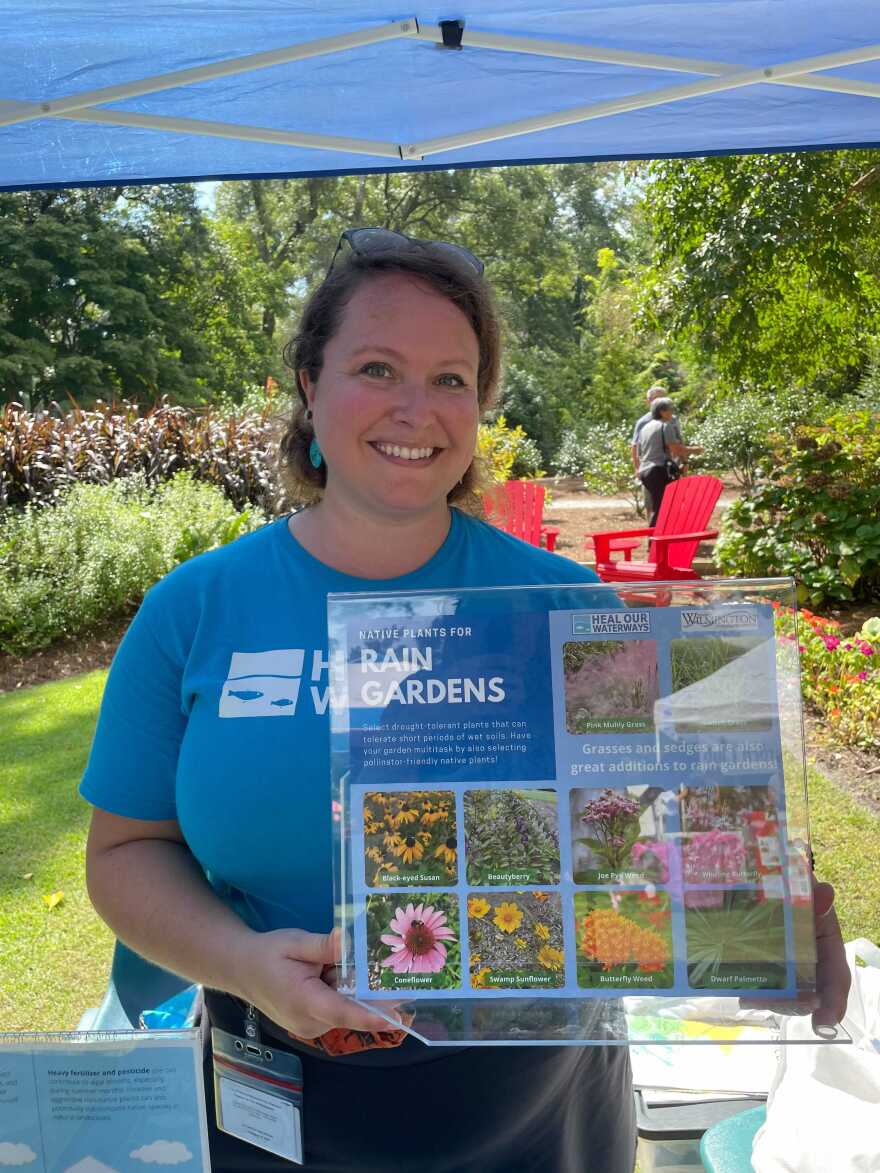Every town and city in America is part of its local ecosystem, and residents can choose to support that local ecosystem with their homes and gardens.
That’s why New Hanover County puts on the Native Plant Festival each year at the arboretum — it’s a place for plant lovers and gardeners to gather and share their secrets to successful growth that supports local flora and fauna.
Rain Gardens
Planting native plants can be a helpful strategy for preventing flooding during serious storms. All that water needs to go somewhere, and a rain garden can help take the excess off the roads and sidewalks and direct it to the water table.
The goal is to prevent stormwater from running over concrete and into the streams. When that happens, the water picks up pollutants before flushing into the waterways — including bacteria, pet waste, or fertilizer — turning rainwater into runoff. Fertilizers, especially, can be harmful to ponds and lakes — that’s what causes toxic algae blooms, which can kill fish and other creatures.
Anna Reh-Gingerich, the watershed coordinator for Wilmington, said rain gardens are pretty simple, and they can be a beautiful addition to anyone’s yard. “Rather than being a mounded garden bed that you plant your plants into, we shape it like a bowl in the ground,” she said. “That bowl allows the runoff to actually go into that garden.”

The stormwater will sit in the garden for 24-48 hours while it seeps into the earth. “So it looks very wet for a short period of time, and then it will eventually soak into that ground beneath it and recharge the groundwater table,” Reh-Gingrich said.
She added that grasses and pollinators can be good options for a rain garden. Colorful plants like Pink Muhly, Joe Pyre Weed, Swamp Sunflower, and Butterfly Weed can bring a colorful look to the landscaping, and support local bees and other pollinators.
But the key is to use drought-resistant plants, so they don’t require extra watering once they’re established.
Gardeners can even get downspout redirectors to take the excess rainwater from their roofs and direct it to the rain garden — or they can collect the rainwater in barrels to water other plants.
Composting
There are plenty of ways to compost in the Cape Fear Region- from backyard gardens to composting businesses that pick up containers from residential homes. Composting is a strategy used to keep organic material out of landfills, and instead put it to productive use.

When organic materials are given the right environment, microorganisms will begin consuming the food and breaking it down into more base components. That can just be the beginning, though, according to Troy Robinson.
Robinson runs a business called We Use Worms- and he does use worms. At the native plant festival, he stood before two trays of dirt as a demonstration of the positive impact worms can have on the soil.
After an initial, “hot composting” cycle, which involves microorganisms, Robinson likes to take his compost to the next level with “cold composting.”
“Worms are filter feeders, sort of like whale sharks,” he said. They consume the hot compost material or dirt and filter out the microorganisms for their own meals.
In that process, they take the nitrogen in the soil and oxygenate it, turning it into nitrate- a key nutrient for plants. “Plants do not like nitrogen, they like nitrate,” Robinson explained. “That’s why if you put too much fertilizer down, the plants will burn. Because the nitrogen burns.”
Native Plants
There are dozens of native plant species that thrive in Wilmington’s soil and weather. Local gardening shops carry varieties such as Black-Eyed Susans, Swamp Sunflowers, or Coneflowers, along with the famed Venus Flytraps native to the Wilmington area.
New Hanover County has a guide for planting a pleasing garden with native plants, and organizations like the North Carolina Native Plant Society are full of experts passionate about native plants.
Happy gardening!




